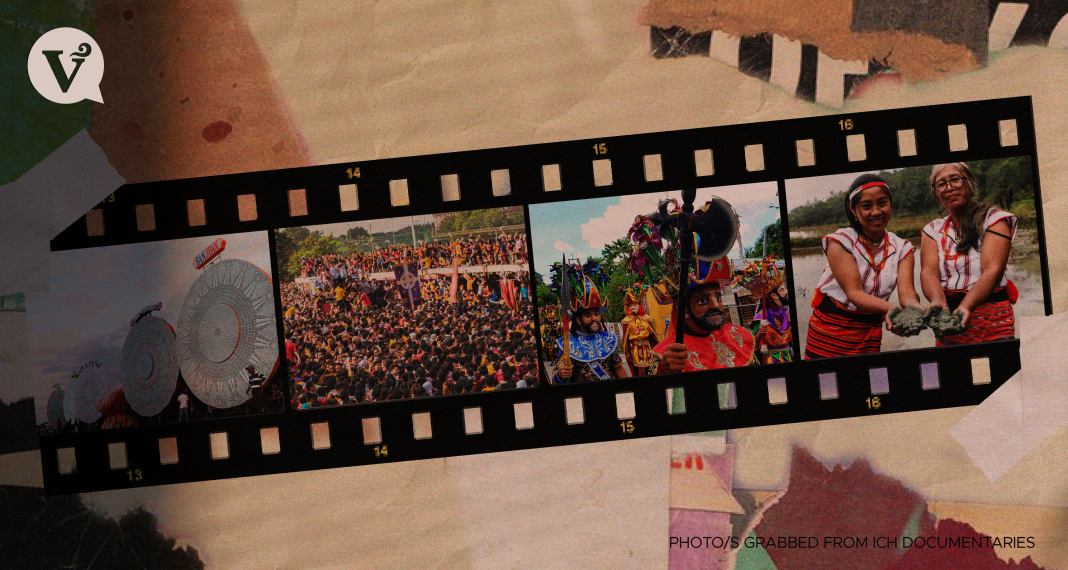The International Information and Networking Centre for Intangible Cultural Heritage in the Asia-Pacific Region has launched 10 video documentaries featuring Philippine cultural heritage.
The documentaries are part of a documentation project for intangible cultural heritage, implemented in 2015.
Intangible cultural heritage, according to Unesco, is defined as the traditions or living expressions inherited from ancestors and passed on to the next generations. Such include oral traditions, performing arts, social practices, rituals, festive events, knowledge and practices concerning nature and the universe, and production of traditional crafts.
The film lineup includes documentaries on the traslacion or procession of the Black Nazarene (Poong Nazareno: The Traslacion of the Black Nazarene of Quiapo, Manila); the moryonan Lenten penitential ritual in Marinduque (Moryonan: A Lenten Tradition in Marinduque Island); the craft of making moryonan masks (Mukha ng Moryonan: Mask Making for Moryonan Lenten Tradition of Marinduque); the feast of Our Lady Peñafrancia of Naga City (Ina: Our Lady of Peñafrancia) and the buklog ritual of the Subanen of the Zamboanga Peninsula (Buklog: The Ritual System of the Subanen of Zamboanga Peninsula).
Also, the giant Christmas lantern tradition of San Fernando, Pampanga (Parul Sampernandu: The Giant Christmas Lantern Tradition of San Fernando City, Pampanga); the use of mud in traditional Ifugao textile dyeing (Using Mud as Mordant in the Traditional Dyeing Process of the Ifugao of Northern Luzon); piña weaving of Aklan (Piña: The Pineapple Textile of Aklan, Western Visayas); the igal or traditional dance of the Sama people of Tawi-Tawi (Igal: Traditional Dance of the Sama of Tawi-Tawi), and the their boat-building practices (Lepa and Other Watercrafts: Boat Building Traditions of the Sama of Tawi-Tawi).
Roel Manipon, an editor at the National Commission for Culture and the Arts (NCCA) who worked on the documentaries as writer and co-director, underscored the importance of preserving the country’s intangible cultural heritage elements.
“[These] are some of the most impactful factors in shaping civilization and culture and yield invaluable insights into many aspects of social relationships and human development,” the former Varsitarian associate editor said.
Manipon noted that these elements were at risk of vanishing and alteration with the rapid growth of urbanization and globalization. Because of modern technology, these can be preserved.
“The video documentation presents a lifeline to these elements and will present the only connection for many people to these precious aspects of culture and identity,” said Manipon.
Nestor Horfilla, theater veteran and Mindanao culture expert, said the documentaries were effective in promoting intangible cultural heritage elements and served as a source for teachers and learners in need of national cultural content.
“The video documentaries make the unfamiliar familiar. While we struggle, day by day, with the challenges and threat of the pandemic, the digital technology and online platform take center stage,” Horfilla said.
Each documentary runs at an average of 27 minutes. The works have English and Korean subtitles.
The Philippines is one of the four countries selected in Southeast Asia for the second phase of the video documentary project, with the other three being Vietnam, Malaysia and Indonesia.
The international network has been a partner of the NCCA for the project since November 2017. Production of the documentaries took place from 2018 to 2020.













